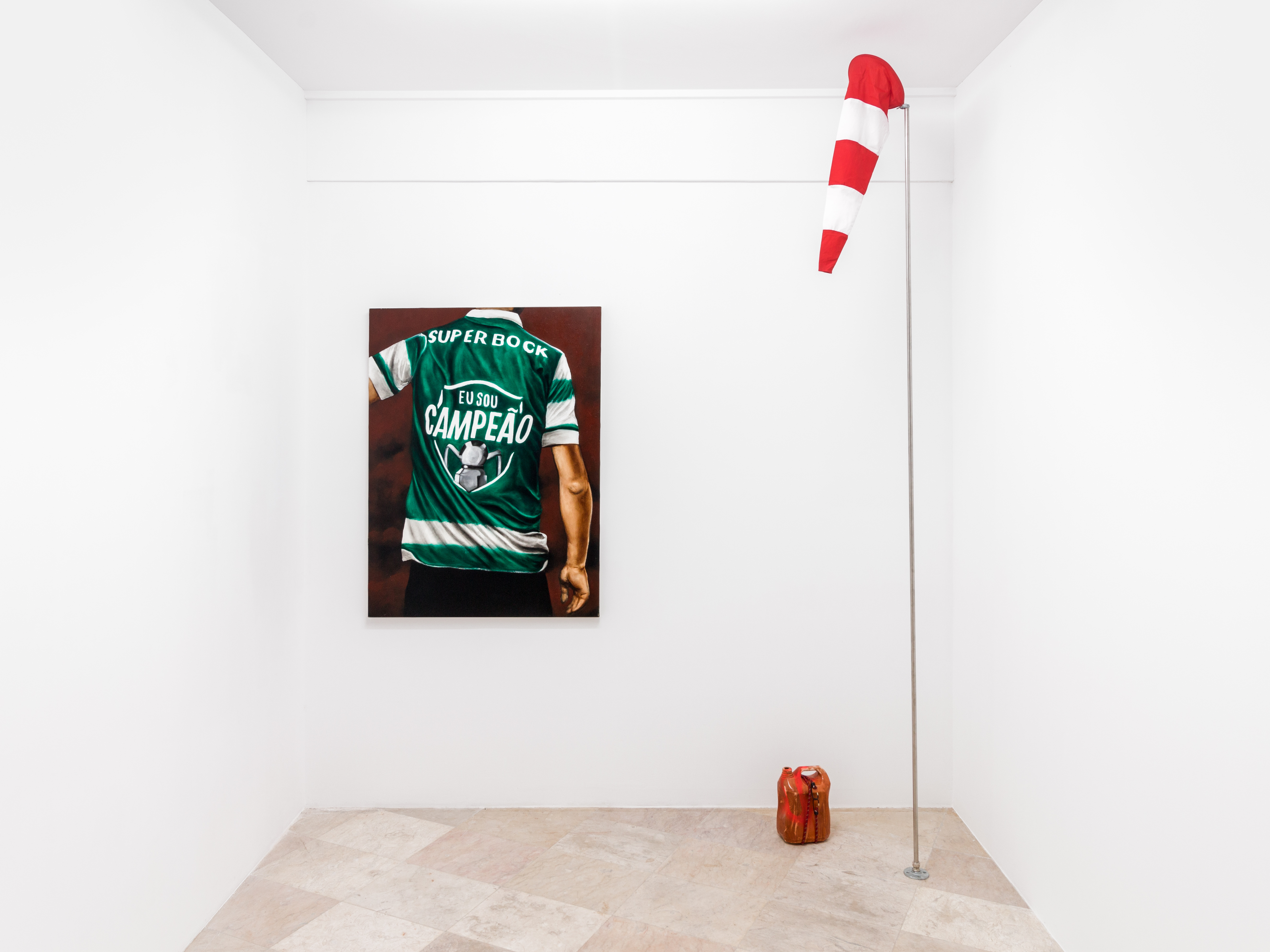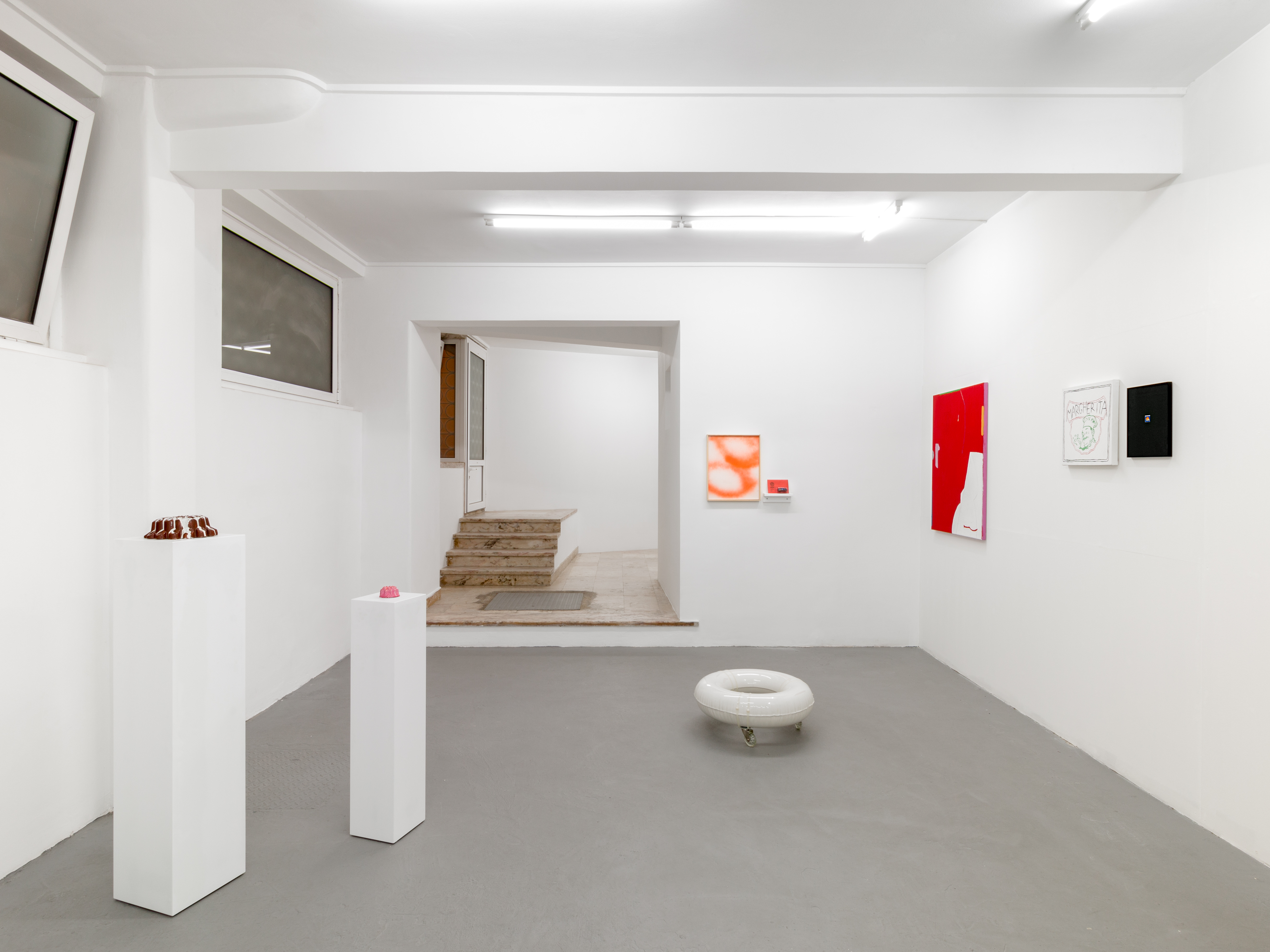Ostreoidea
November 30, 2022 — December 27, 2022
Ostra, Lisbon, Portugal
Artists: AFFDP (Andrea Frosoloni, Federica di Pietrantonio), Aires de Gameiro, Alex Macedo, Ana Fonseca, Diego Machargo, Eduardo Fonseca Silva, Francisca Valador, Francisco Pinto, Hugo Cantegrel, Lea Managil, Manuel Tainha, Pedro Cabrita Paiva, RitaGT, Rodrigo Rosa
This project builds on the recent opening of the artist-run-space Ostra and attempts to topographically present (albeit selectively) one possible point of view on the contemporary young collection of Bartolomeu Santos, himself an artist of the same provenance. The nautical metaphor in modernist literature has served as a springboard for reflections on ideas about the city, art and specific cultural and environmental climates.

Coming from the „sea of streets“, one is invited to „sip on colour and warmth“1; a new sincerity. Catching sight of works on display, one recognizes that they are living in numerous beds forming communities, able to settle on hard substrates. Their mature shape often depends on the type of bottom to which they originally attached themselves. In some respects they are razor-sharp, skin-cutting, thorny; on the other hand, they may be round, gleaming and soft. Some ridges are more hidden, they have a quiet attitude. Others are louder. Many of them will become relics over time that humans are unable to survive. They all belong to the same superfamily: Ostreoidea.
When Harold W. Harry used the term living oysters, he meant to convey that all the molluscs belong to one taxonomic category – they are "members of Ostreoidea"2. All Ostreacea are marine, found from tropical to low-temperature seas, but they are most diversified in warmer areas. The specific topography of the environment is always engraved not only in the anatomy but also in the memory. At the same time, however, it is memory that blurs real phenomena and creates its own distorted map of experience. Irregularly shaped, usually smaller in size, and installed in groups, the bodies are thus in this exhibition context precious mnemonic traces of events and places. Experimenting with colour, forms and materials they shuck the shells between the profane world and contemporary fine art. In this way they could be seen as a hyperbolic celebration of such a hazy experience – grains of sand turning into pearls waiting to be discovered through the mind. Despite the hybridization of different backgrounds, Ostreoidea is ultimately a testament to the possibility of different young approaches to art to coexist, including their specific but close languages. To share a space for risk and sometimes even humour and laughter.
I challenge you therefore to eat "a whole bedfull of oysters"3, to dive into your own „central oyster of perceptiveness,“4 to turn into your own street / oyster hunt.
All of the works selected for this international group exhibition come from artists represented in part of Bartolomeu Santos' private collection. The only exception is the work of the Viennese-Luxembourg artist Alex Macedo, who has never exhibited in his home country and whose paintings fit the narrative of the exhibition. This project builds on the recent opening of the Ostra space with an attempt to topographically present (albeit selectively) one possible angle on the contemporary young collection of Santos, himself an artist of the same provenance. The maritime metaphor in modernist literature has served as a springboard for reflections on ideas about art, the city and the specific cultural and environmental climate. All relevant references are listed in the footnotes.



1 Lanone, Catherine, “The Non-Linear Dynamics of Virginia Woolf's London: from Elation to Street Haunting”, Caliban, 25, 2009, URL: http://journals.openedition.org/caliban/1639.
2 Harry, Harold W, “Synopsis of the supraspecific classification of living oysters (Bivalvia: Gryphaeidae and Ostreidae)", The Veliger, 28, 2, 1985, p. 121.
3 The Letters of Virginia Woolf, Volume III, 398, no. 1783.
4 Woolf, Virginia, “Street Haunting, The Death of the Moth and Other Essays”, New York: Harvest, 1974 (1942), p. 22.







